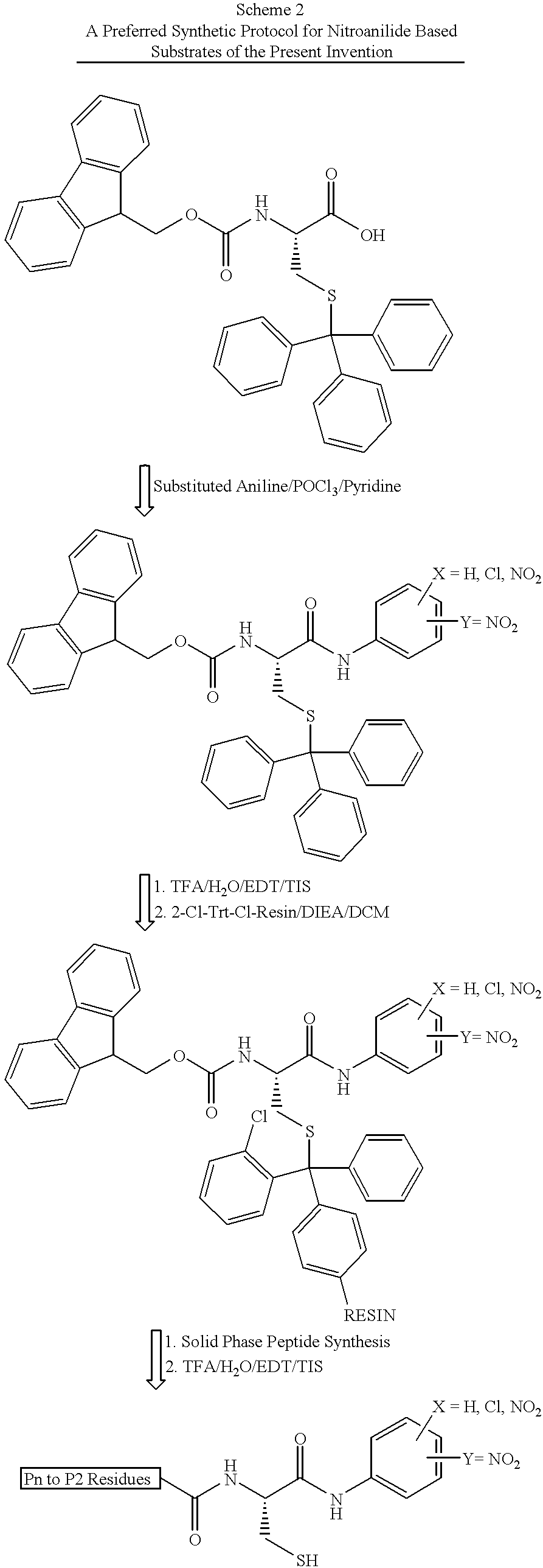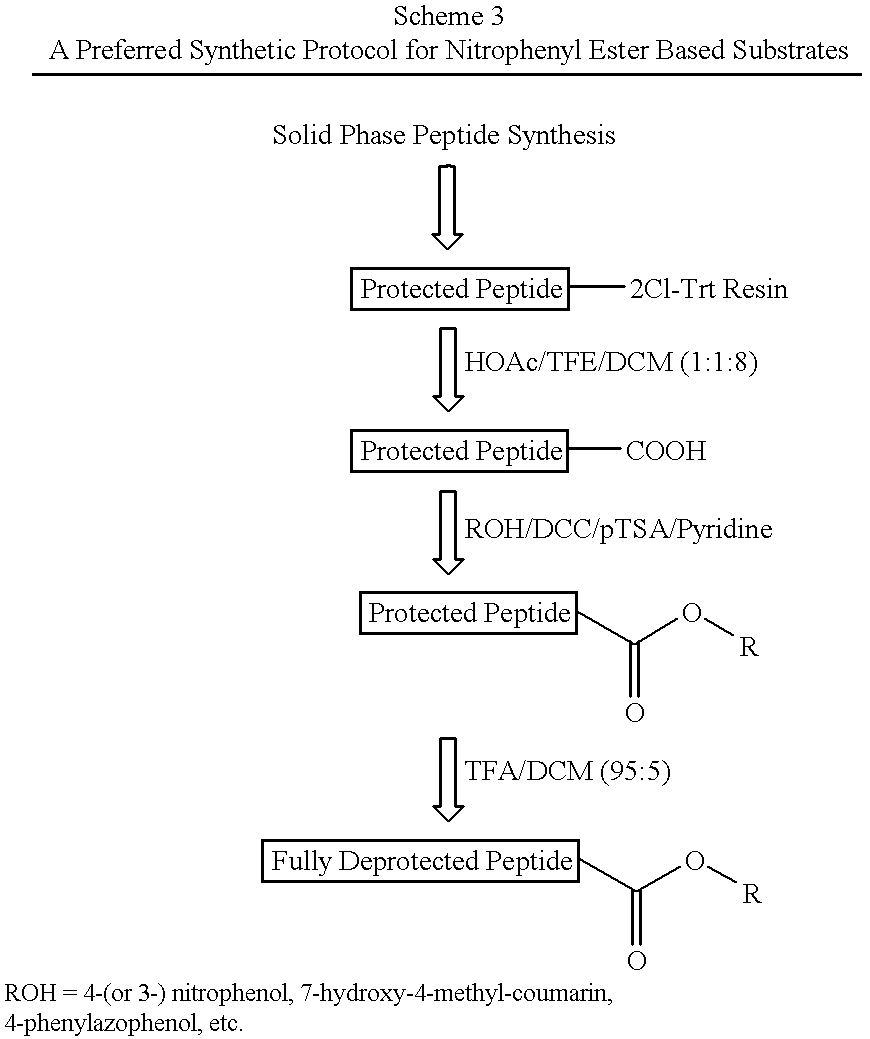Peptide substrates for HCV NS3 protease assays
- Summary
- Abstract
- Description
- Claims
- Application Information
AI Technical Summary
Benefits of technology
Problems solved by technology
Method used
Image
Examples
example 1
Nitroanilide Based Chromogenic Substrates
The chromogenic substrates defined by SEQ ID NOs: 1-4 were synthetically produced as described above and tested for cleavage efficiency in 25 mM MOPS buffer, pH 7.5, containing 10% (v / v) glycerol, 0.15 M NaCl, 0.2% lauryl maltoside and 10 mM DTT. The HCV NS3 protease used in our assays was a non-covalent complex of full-length HCV 1a(H) (SEQ ID NO:25) with amino acids 1-54 of the NS4A cofactor (SEQ ID NO:26) ("NS3(1-631) / 4A(1-54)"). The complex was expressed in a baculovirus system as described in Sali et al, 1998, Biochemistry 37:3392-3401. The protease construct, containing an N-terminal histidine tag, was spontaneously generated by an intramolecular cleavage and purified to greater than 95% homogeneity by nickel-nitrilotriacetic acid affinity chromotography. The histidine tag was then cleaved by thrombin to yield the NS3 / 4A protease which was a noncovalent complex between NS4A (54 residues) and NS3 (631 residues) with an additional seven h...
example 2
Nitrophenyl and Other Ester Based Chromogenic Substrates
The chromogenic substrates defined by SEQ ID NOs: 5-13 were synthetically produced as described above and tested for cleavage efficiency in 25 mM MOPS buffer, pH 6.5, containing 10% (v / v) glycerol, 0.15 M NaCl, 0.2% lauryl maltoside. The substrates were cleaved by NS3 / 4A(1-631) / 4A(1-54) (see Example 1). The rate of product formation was monitored by a spectrophotometer, at 400 nm for 4Np, 370 nm for PAP, and 340 nm for 3Np and HMC.
As can be seen from Table 2, all ester based substrates were very well cleaved. The autohydrolysis rate measured at pH 6.5 was negligible for 4-phenylazophenyl ester substrates (<0.08% per min), minimal for 7-hydroxy-4-methylcoumarinyl ester and 3-nitrophenyl ester peptide substrates (<0.15% per min), but more pronounced for 4-nitrophenyl ester peptide substrates.
example 3
Fluorogenic Substrates
The fluorogenic substrates of the invention are synthetically produced as described above in Scheme 2, and dissolved in an assay buffer prepared from ultralow fluorescence grade reagent, containing 25 mM MOPS buffer, pH 7.5, containing 10% (v / v) glycerol, 0.15 M NaCl, 0.2% lauryl maltoside. To test for cleavage efficiency, the substrate cleavage by HCV NS3 is monitored continuously by a spectrofluorometer. The excitation and emission wavelengths used to detect the release of the fluorophore depend on the specific fluorophore used and the extent of spectral overlap between the substrate and the free fluorophore. Generally, off-peak detection is used to minimize the interference from the substrate. For example, the methylcoumarin-containing substrates cleavage may be detected at .about.460 nm with excitation at .about.380 nm, acridine-containing substrate may be detected at much higher wavelengths (e.g., emission at .about.460 nm and excitation at .about.580 nm)....
PUM
| Property | Measurement | Unit |
|---|---|---|
| Time | aaaaa | aaaaa |
| Time | aaaaa | aaaaa |
| Time | aaaaa | aaaaa |
Abstract
Description
Claims
Application Information
 Login to View More
Login to View More - R&D
- Intellectual Property
- Life Sciences
- Materials
- Tech Scout
- Unparalleled Data Quality
- Higher Quality Content
- 60% Fewer Hallucinations
Browse by: Latest US Patents, China's latest patents, Technical Efficacy Thesaurus, Application Domain, Technology Topic, Popular Technical Reports.
© 2025 PatSnap. All rights reserved.Legal|Privacy policy|Modern Slavery Act Transparency Statement|Sitemap|About US| Contact US: help@patsnap.com



